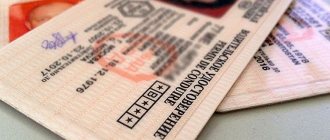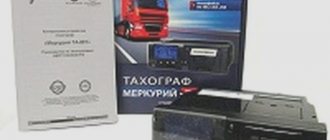Passenger and cargo vehicles, as well as tractors and self-propelled combines of all brands and models are recognized as subject to taxation by the transport tax. At the same time, organizations and individual entrepreneurs classified as agricultural producers may be exempt from paying tax on vehicles used in production. In the article, we will find out what the conditions are for exempting an agricultural producer from paying tax, and we will also look at how to calculate the transport tax of an agricultural producer in relation to objects not used in the production process.
Who should pay transport tax
The tax is paid by organizations and individuals, including individual entrepreneurs, for whom cars or trucks are registered with the State Traffic Inspectorate.
Also, transport tax is paid by companies and individuals (including individual entrepreneurs) who own registered self-propelled vehicles (tractors, excavators, tractors), helicopters, motor ships, boats, yachts, motor boats and other water and air vehicles. Fill out and submit your transport tax return for 2022 for free online
IMPORTANT
As for water transport, non-self-propelled (towed) vessels - barges, platforms, floating docks, etc. are also subject to tax. But in relation to trailers for land vehicles, there is no need to pay tax, even if the trailer is equipped with a motor necessary for the operation of the equipment installed on it (letter of the Ministry of Finance dated 02.16.11 No. 03-05-05-04/03).
Do I have to pay tax on quadcopters? It all depends on the maximum take-off weight of the aircraft. According to subparagraph 1 of paragraph 1 of Article 33 of the Air Code of the Russian Federation, official registration is required if the specified mass of the “drone” exceeds 30 kg. Unmanned civil aircraft with a maximum take-off weight from 0.25 kg to 30 kg inclusive are not subject to state registration, but registration (clause 3.2 of Article 33 of the RF Civil Code).
This difference in terminology is significant for transport tax purposes. As mentioned above, only registered vehicles are subject to it. Therefore, in relation to “drones” with a take-off weight from 0.25 kg to 30 kg, there is no need to pay transport tax (letter of the Federal Tax Service dated 02/11/19 No. BS-4-21 / [email protected] ).
ATTENTION
Evasion of registration of a vehicle (vehicle) will not relieve its owner from the need to remit transport tax (Resolution of the Presidium of the Supreme Arbitration Court of the Russian Federation dated 06/07/12 No. 14341/11).
Fill out waybills indicating the route and mandatory details in a special service
Online calculators for easy calculations
In order to avoid any arithmetic error when calculating tax, we suggest that owners of ATVs, snowmobiles, tractors, and bulldozers use online calculators. These links will help you accurately calculate the tax required to be paid to the budget:
- https://calcsoft.ru/kalkulator-transportnogo-naloga-na-snegohod;
- https://www.nalog.ru/rn77/service/calc_transport/ – Federal Tax Service;
- https://law.drom.ru/calc/ – Drom.ru calculator
Find out the procedure for calculating transport tax, formulas and examples, as well as how to use an electronic calculator here.
Major changes in transport tax for 2022
Let us remind you: from 2022, organizations have a new responsibility. They must report to the Federal Tax Service about available benefits for transport tax using a special form (approved by order of the Federal Tax Service dated July 25, 2019 No. ММВ-7-21/ [email protected] ; see “Approved application form for benefits for organizations on transport and land taxes ").
Previously, such a statement was not required - all information about benefits was reflected directly in the tax return. The Federal Tax Service clarified that applications need to be submitted only for tax periods starting from 2020. For previous years, as well as for periods during 2020 (for example, if the company was liquidated or reorganized), a separate application for benefits is not required (letter dated 09.12.19 No. BS-4-21 / [email protected] ).
ATTENTION
There is no deadline for applying for benefits. But, obviously, it is better to do this before the date of tax payment or the first advance payment on it. Therefore, if an organization has a tax exemption (advance payments) for 2022, then it is advisable not to delay submitting the application. Although, we note that the Federal Tax Service does not object to a later filing of the application (in 2022), that is, after paying the tax and receiving from the Federal Tax Service a message about the calculated (without benefit) amount of tax (letter of the Federal Tax Service dated December 3, 2019 No. BS-4- 21/ [email protected] ; see “The Federal Tax Service told how organizations can apply benefits for transport and land taxes from 2022”).
Apply for benefits online Apply for free
There is no need to submit a transport tax return for 2020 in 2022. It was canceled by Federal Law No. 63-FZ dated April 15, 2019 (see “Amendments to the Tax Code of the Russian Federation on “property” taxes: cancellation of declarations on transport and land taxes, new rules on benefits for individuals”). This is precisely why the introduction of a separate statement of benefits is connected.
Another change will affect owners of expensive cars. When calculating the tax for 2022, they must take into account the new list of cars for which increasing coefficients are applied (see “The list of expensive cars for calculating the transport tax for 2022 has been published”).
IMPORTANT
Organizations independently calculate advance payments and taxes at the end of the year and enter them into the budget within the established time frame. Starting from 2021, tax officials also determine the amount of tax (based on the information they have) and send out messages to organizations in the form approved by Order of the Federal Tax Service dated July 5, 2019 No. ММВ-7-21 / [email protected] .
The message is sent no later than 6 months after the tax payment date. If the taxpayer believes that the inspectors calculated the tax incorrectly, he can express his disagreement. In this case, you need to send explanations and supporting documents to the Federal Tax Service. Receive notifications from the Federal Tax Service about the amount of transport tax and generate payments in one click Generate for free
Advance payments and final technical specification
The frequency of advance payments depends on whether the regional authorities have established reporting periods or not. If yes, then you need to pay quarterly, if not, then at the end of the year.
Advance payments are made in equal installments. The formula used to calculate them is as follows:
AP = ¼ x TN
At the end of the year, TN is calculated minus advance payments:
TN = NB x NS – AP
Calculation example
Throughout 2022, the company owned a passenger car with an engine power of 150 hp, which is considered the tax base. The regional rate is 10 rubles.
First, the tax amount is calculated:
150*10=1500 rubles
Then the advance payment is determined from it:
¼*1500=375 rubles
The final transport tax, taking into account advances made every quarter (that is, 3 times), is calculated as follows:
1500- (375*3)=375 rubles
Transport tax table
There is no single rate for transport tax. Each subject of the Russian Federation has its own rates (but in most cases they cannot differ from the rates established in the Tax Code of the Russian Federation by more than 10 times). The rate depends on the type of vehicle (land, water, air), whether it has a motor and its power.
Information on current transport tax rates in a particular region can be found using a special service on the Federal Tax Service website. To do this, you need to indicate in the appropriate fields information about the tax period (the year for which the tax is paid) and the region. After this, you need to click the “Find” button and follow the “More details” link (located opposite the information about the regional law that appears).
What are the rates for different regions?
In the country's tax system, transport tax applies to the regional level . Each subject of the Federation has its own regulations at the regional level, which introduce a tax on vehicles in a given municipality. Local authorities, based on the rates prescribed in Art. 361 of the Tax Code of the Russian Federation , determine their own rates.
Municipalities can differentiate transport tax rates based on the following criteria :
- depending on the vehicle engine power;
- from gross tonnage;
- on the number of years of operation;
- depending on the type of transport.
Therefore, tax rates on tractors may vary slightly in different cities of the country. On the official website of the Federal Tax Service there is a convenient electronic service called “Reference information on rates and benefits for property taxes” for those who want to find out the rates in force in their region, as well as the categories of benefit recipients, which are also set at the local level.
If a tractor is included in the list of objects of taxation, that is, it is not involved in the agricultural industry, then what rates will apply to it? Such transport should be classified in the category “Other self-propelled vehicles, pneumatic and tracked machines and mechanisms” , and it is for this type that the appropriate rates are selected.
As an example, let's look at how transport tax rates for the MTZ-82 tractor (81 hp) differ in different cities of the country:
| Region | Rate, (rub. per horsepower) |
| Moscow | 25 |
| Saint Petersburg | 25 |
| Krasnodar | 10 |
| Novosibirsk | 25 |
| Vladivostok | 15 |
| Vorkuta | 15 |
Thus, in the capital region and St. Petersburg in 2022, tractor owners will have to pay 2,025 rubles for it (25 rubles × 81 hp). The same amount comes out for residents of Novosibirsk. In the northern regions of the country and the Far East, a tractor is cheaper: 1215 rubles (15 rubles × 81 hp). In areas of the Black Earth Region with well-developed agriculture, the rate is 10 rubles, and the tax is only 810 rubles per year.
Increasing coefficients for calculating transport tax
The tax on expensive cars is calculated taking into account the increasing coefficient (clause 2 of Article 362 of the Tax Code of the Russian Federation). It amounts to:
- 1.1 - for passenger cars worth from 3 million to 5 million rubles. inclusive, from the year of manufacture of which no more than 3 years have passed;
- 2 - for passenger cars worth from 5 million to 10 million rubles. inclusive, from the year of manufacture of which no more than 5 years have passed;
- 3 - for passenger cars worth from 10 million to 15 million rubles. inclusive, from the year of manufacture of which no more than 10 years have passed, as well as in relation to passenger cars costing from 15 million rubles, from the year of manufacture of which no more than 20 years have passed.
The list of such cars for 2022 is posted on the website of the Ministry of Industry and Trade. When using this list, please note that some of them have additional restrictions. We are talking about the column “Number of years that have passed since the year of issue” of the table. For example, for BMW M240i xDrive cars with a 2,998 cc petrol engine. see, the coefficient is applied only if 2 to 3 years inclusive have passed from the date of issue.
How to determine the number of years that have passed since the car was manufactured? The Tax Code of the Russian Federation does not contain clear explanations in this regard. In practice, two approaches to calculating the age of cars have been developed.
The first is based on the explanations given in the letter of the Federal Tax Service dated 03/02/15 No. BS-4-11 / [email protected] It says that when calculating the transport tax for 2014 in relation to a 2011 car, the number of years that have passed since the year of its manufacture, is 4 years. That is, the number of years that have elapsed since the year of manufacture of the car is determined in whole years. Therefore, the age of a car just released by a factory is one year (for the period before the end of the calendar year in which it was manufactured).
This means that the transport tax for 2022 for an expensive car in 2022 must be calculated taking into account the fact that the number of years that have passed since the year of its manufacture is 1 year. Such a car falls into the category “from 1 to 2 years inclusive” as defined in the list. Therefore, you will have to apply a multiplying factor.
The second approach is also based on official explanations. The letter of the Ministry of Finance dated 06.11.14 No. 03-05-04-01/28303 (brought to the attention of the tax authorities by the Federal Tax Service letter dated 07.07.14 No. BS-4-11 / [email protected] ) states that when calculating transport tax for 2014 year for a 2014 car, the number of years that have passed since the year of its manufacture will be no more than 1 year.
It turns out that for a 2022 car, the number of years that have passed since the year of its manufacture will be no more than 1 year. Consequently, such a car does not fall into the “from 1 to 2 years inclusive” category defined in the list, and when calculating the tax for 2022, an increasing factor is not required.
Unfortunately, there is no arbitration practice on this issue. Therefore, the taxpayer will have to decide for himself which of the above approaches to apply when calculating the age of the car. You can also contact the tax authority at the place of registration with a written request about the procedure for calculating transport tax in relation to a specific car (subclause 1, clause 1, article of the Tax Code of the Russian Federation). Following this clarification will exempt you from tax liability and will become the basis for non-accrual of penalties (subclause 3, clause 1, article 111 and clause 8, article of the Tax Code of the Russian Federation).
Receive requirements and send requests to the Federal Tax Service via the Internet
Legislation
All rules regarding the regulation of transport tax are regulated in the Tax Code, as well as Federal Law No. 117, which was adopted on 08/05/2000. It also takes into account all amendments, the last of which were made on 10/01/2018.
When agricultural machinery belongs to a legal entity, the tax on the T 25 tractor or any other is calculated by the organization’s accountant.
Who doesn't need to pay
Agricultural machinery, like any other, is subject to transport tax. This is stated in Art. 358 NK. There is also a list of types of vehicles that are exempt from paying such fees. Thus, the legislation establishes specific benefits for citizens. Thus, those owners who work in the agricultural sector and produce relevant products can count on exemption from such taxation. These can be not only individuals running their own peasant farms, but also legal entities represented by enterprises or organizations. The most common tractor in the CIS, the MTZ 80, belongs to category C. This is important to remember when obtaining licenses to operate agricultural machinery.
Are there any benefits
Before calculating transport tax, it is worth finding out what benefits apply to tractors. There are several types of them that can change the amount of tax on a tractor or cancel it:
It is worth considering each of them in more detail.
Federal
This category of benefits is valid throughout Russia. First of all, this is an exemption from taxes on tractors that are used by owners to create agricultural products. They are indicated in the list of objects not subject to taxes in accordance with the current Tax Code. Such categories of producers of agricultural products include all enterprises or persons who conduct personal subsidiary plots and also pay a single agricultural tax, that is, those who produce products, process them and sell them.
Eg:
- Any agricultural cooperatives.
- Citizens providing various support services using tractors in agriculture.
- Various fishery organizations or associations.
All of the above categories must comply with the general condition regarding their recognition as agricultural producers. To do this, they need to have 70% or more income from sales of products of this type. The products themselves, as well as those sold, can be of plant or animal origin.
The tax on the sale of a tractor by an individual is calculated in the same way as for passenger cars.
Before 2007, there was no clear definition of who agricultural producers were. For this reason, they had to pay tax on the T 40 tractor, as used for running their own farm. The situation changed after amendments were made to the legislation, as well as the entry into force of the new Federal Law No. 264, according to which tractors in villages became objects not subject to taxation. It is important that such equipment is used for its intended purpose, and that companies respect the share of income from the sale of agricultural products.
Regional
In addition to national federal benefits, local administrations have the right to establish their own. They differ in each region. For example, in St. Petersburg there are benefits for enterprises that use natural gas (methane or propane) as fuel for engines.
In the capital, as well as in the Krasnodar Territory, participants in special economic zones are encouraged. As for Novosibirsk, there is a 95% discount applicable to all individuals and legal entities using self-propelled vehicles equipped with tracks. But in Vorkuta they encourage farmers and peasants who receive at least 50% of their income from the sale of agricultural products.
Transport tax benefits
Just like rates, benefits are determined at the level of constituent entities of the Russian Federation. Article 361.1 of the Tax Code of the Russian Federation, which is called “Tax benefits,” establishes only a general procedure for their use. In particular, it says that in order to apply the benefit, the taxpayer needs to submit an application to the Federal Tax Service. However, if an application for a benefit is not submitted, tax authorities must apply it independently based on the data available to them.
IMPORTANT
Individual entrepreneurs pay transport tax like ordinary individuals.
This means that they must remit the transport tax based on the payment notice received from the tax office. It will include tax for no more than three years preceding the year in which the notice is sent. Tax authorities receive information for calculations from the authorities that register vehicles. If during the period of ownership of the vehicle the individual entrepreneur has not received a notice of tax payment, it is necessary to inform the inspectorate about the subject of taxation. Generate a payment invoice for payment of tax (penalties, fines) in one click based on the request received from the Federal Tax Service
The Tax Code contains a list of vehicles for which you do not have to pay tax at all. This is not about a benefit, but about the exclusion of a vehicle from the object of taxation (clause 2 of Article 358 of the Tax Code of the Russian Federation). This means that such transport does not need to apply for a benefit - the tax exemption is automatic.
Thus, throughout the entire territory of the Russian Federation you can avoid paying tax if the vehicle is wanted or the search has been stopped. The tax does not need to be transferred from the month the search began. In this case, the fact of theft (theft) is confirmed by a document issued by the police (State Traffic Safety Inspectorate) or information that the Federal Tax Service receives through interdepartmental information exchange (Article of the Tax Code of the Russian Federation). Also see: “When are stolen vehicles not subject to tax?”
Also not subject to tax are tractors, self-propelled combines of all brands and special vehicles (milk tankers, livestock tankers, vehicles for transporting poultry, vehicles for transporting and applying mineral fertilizers, veterinary care, technical maintenance). The exemption is valid if vehicles are registered to agricultural producers and are used for agricultural work.
Submit a free notification of the transition to the unified agricultural tax and submit tax reports
In addition, fishing sea and river vessels, as well as vessels registered in the Russian International Register of Vessels, are not subject to the tax. Organizations and individual entrepreneurs that carry out passenger and (or) cargo transportation do not have to pay tax for passenger and cargo sea, river and aircraft vessels that they own (under the right of economic management or operational management).
Accounting for vehicle ownership coefficient
An organization applies a ownership coefficient (Q) when equipment is not registered for it for the entire reporting year or quarter. If the vehicle is owned for a full year, then the coefficient is 1 and does not affect the final amount of the TN. Therefore it is not taken into account.
The coefficient is calculated using a separate formula:
Kv = number of full months of vehicle ownership/number of months in the reporting period
Calculation of transport tax in 2022
Tax must be paid only for those months when the vehicle was registered to the taxpayer. In this case, the calculation is carried out monthly and in full months, while registration can take place on any day. In this regard, the following rules have been established.
If the car is registered from the 1st to the 15th day of the month inclusive, then this month is taken as a full month. And if registration took place between the 16th and the last day of the month, then this month is not taken into account when calculating the tax.
When registration is terminated, the situation is reversed. If a car is deregistered from the 1st to the 15th of the month inclusive, then no tax is paid for that month. And if the date of deregistration falls on the period from the 16th to the last day of the month, then the tax will have to be paid for the full month (clause 3 of Article 362 of the Tax Code of the Russian Federation).
Regional laws for organizations may establish advance payments. In this case, at the end of each reporting period (first, second and third quarters), an amount equal to ¼ of the product of the tax base and the tax rate, taking into account the increasing coefficient (clause 2.1 of Article 362 of the Tax Code of the Russian Federation), is paid.
An example of calculating transport tax in 2022
The organization owns two cars. Truck with engine power 300 hp. s., which was purchased and registered on March 16, 2022. And a passenger car with an engine power of 205 hp. s, which was purchased in the previous tax period. This machine is included in the list of expensive ones (cost from 3 million to 5 million inclusive).
Based on regional law, the tax rate for a truck is 100 rubles/hp, and for a passenger car - 50 rubles/hp. With. The tax base is the engine power in horsepower. Regional law establishes advance tax payments.
Let's calculate the tax on a truck.
Since the car was purchased in mid-2022, you need to determine the number of months for which the tax is paid. Since the registration date falls on the 16th day of the month, this means that the month of registration (March) is not taken into account when calculating the tax. And in January and February the organization did not have a car.
Thus, for the first quarter the amount of the advance payment is not formed, since the ownership coefficient (Q) for this period will be 0/3, that is, it will be equal to zero. For the second and third quarters you will need to pay 7,500 rubles (1/4 × 300 hp × 100 rubles/hp). And you will have to pay the same amount at the end of the year, since the annual Kv will be 9/12 or 0.75. (300 hp × 100 rub./hp × 0.75 - 7,500 rub. × 2) = 7,500 rub.
Let's calculate the tax on a passenger car.
Kv will always be equal to one, since the car was in the possession of the company throughout 2021. An “expensive” coefficient of 1.1 must be additionally applied to the amount of tax and advance payment.
It turns out that for each quarter the organization will pay 2,819 rubles. Here's the calculation: 1/4 × 205 hp. × 50 rub./hp × 1.1 = 2,818.75 rub.; According to the rules of paragraph 6 of Article of the Tax Code of the Russian Federation, this amount is rounded up to the full ruble. The tax at the end of the year will be 11,275 rubles (205 hp × 50 rubles/hp × 1.1). Therefore, you will have to pay an additional 2,818 rubles (11,275 rubles – 2,819 rubles × 3).
In total, for two cars the organization must pay:
- for the first quarter - 2,819 rubles (0 + 2,819).
- for the second quarter - 10,319 rubles (7,500 + 2,819)
- for the third quarter - 10,319 rubles (7,500 + 2,819)
- at the end of the year - 10,318 rubles. (7,500 + 2,818).
The total amount of transport tax for 2022 will be 33,775 rubles (22,500 rubles + 11,275 rubles).
What to take as the tax base
Transport tax is charged on different types of tax base. For tractors that are self-propelled pneumatic or tracked vehicles, as well as for cars, the accrual base is the engine power, measured in units of horsepower (hp), in accordance with paragraphs 1 clause 1 art. 359 NK . This value is taken from the vehicle passport.
Often in documents this indicator is indicated in units adopted in the unified measurement system - kW. Then you need to convert kW to horsepower by multiplying the value by 1.35962. This number means that 1 kW is equal to 1.35962 horsepower .
Controversial issues in determining the tax base and the corresponding rate arise when tax authorities classify some tractors as trucks, which are subject to a higher rate. The classification of a tractor among the types of other self-propelled vehicles, machines and mechanisms on pneumatic and tracked tracks must be based on the passport of the self-propelled vehicle and in accordance with the “Classifier of Vehicle Types for International Transportation” , approved by Decision of the Customs Union Commission No. 378 of September 20, 2010 .
The definition of the concept of a tractor can be found in the “Rules for admission to driving self-propelled machines and issuing tractor operator licenses” , approved by Decree of the Government of the Russian Federation dated July 12, 1999 No. 796 :
2. Self-propelled vehicles in these Rules mean tractors, self-propelled road-building machines and other ground-based trackless mechanical vehicles with independent drive, having an internal combustion engine with a volume of over 50 cubic meters. centimeters or an electric motor with a maximum power of more than 4 kW (with the exception of motor vehicles intended for movement on public roads with a maximum design speed of more than 50 km/h, and self-propelled combat vehicles of the Armed Forces of the Russian Federation, other troops, military formations and bodies performing tasks in the field of defense and state security).
Transport tax reporting in 2022
The “transport” declaration for 2022 needs to be submitted only to those companies that were reorganized or liquidated before the end of this year (see “Tax officials reported which organizations must submit a transport tax declaration for 2022”). “Interim” declarations (calculations) based on the results of reporting periods are not provided.
From January 1, 2022, Article 363.1 of the Tax Code of the Russian Federation, which establishes the obligation to submit a “transport” declaration, ceases to apply (clause 3 of Article 3 of the Federal Law of April 15, 2019 No. 63-FZ). Therefore, there is no need to submit reports at the end of 2022 and later periods.
IMPORTANT
For individual entrepreneurs, no reporting on transport tax is provided.
Fill out and submit your transport tax return for 2022 for free online
Who is eligible for tax breaks?
Article 358 of the Tax Code of the Russian Federation contains a list of vehicles for which legal entities are not required to pay tax. But regional authorities have the right to establish additional benefits.
For example, in the capital, companies that transport passengers on public transport do not pay the fee. In St. Petersburg, companies that own floating docks pay 50% less tax.
You can find out if there are benefits in your region by contacting the tax office.
When calculating, the amount of the benefit is deducted from the amount of the transport tax. The resulting amount must be paid to the Federal Tax Service.
Deadlines for payment of transport tax
From 2022, the payment deadline is the same for the entire country: organizations transfer the tax until March 1 of the next year (Clause 68 of Article of the Federal Law of September 29, 2019 No. 325-FZ). This rule began to apply with the payment of taxes for 2022.
Individual entrepreneurs must pay the amount of tax specified in the notice no later than December 1 of the following year.
Advance payments for transport tax are made only by organizations and only in those regions where these payments have been introduced by the relevant law. Starting from 2022, the transfer deadline has become uniform for the entire country - advance payments must be made no later than the last day of the month following the expired reporting period (clause 1 of Article 363 of the Tax Code of the Russian Federation).
Is a tax declaration required?
A transport tax return is no longer required . Federal Tax Service employees independently request information from the State Traffic Safety Inspectorate and Rostechnadzor about which equipment is registered to a legal entity. As a reminder, the inspectorate sends the payer a notice of the tax amount.
If a citizen has calculated the fee himself, and his result differs from the Federal Tax Service, he can defend his position if it is correct. You will need to justify the correctness of your independent calculations with documentation. The tax service allows 10 days from the date of receipt of notification of the amount of transport tax.
How much do you have to pay (table)
One of the main nuances is the age of the car. If your vehicle is “younger” than 10 years, then you need to pay transport tax 2 years in advance. This rule does not apply to trucks and buses.
The total weight of the car is also taken into account. There are 4 generally accepted categories:
- up to 1.5 tons;
- from 1.5 to 2 tons;
- from 2 to 3 tons;
- more than 3 tons.
Transport tax rates
They are stated in paragraph 112 of the Law of the Republic of Belarus No. 96-3 of December 31, 2013.
For maximum convenience, we have reflected the most current rates for all existing categories in a detailed table.
The cost of the road participation fee, which is planned to be introduced for individuals instead of the duty, is the same. But you can pay individuals not immediately for the year, but by months. And if you pay for a year or more, you get a 20% discount. Those. the indicated amounts must be multiplied by a reduction factor of 0.8. To calculate how much to pay per month, divide the amount by 12.
The table is wide; on smartphones, swipe it to the left for a full view.








